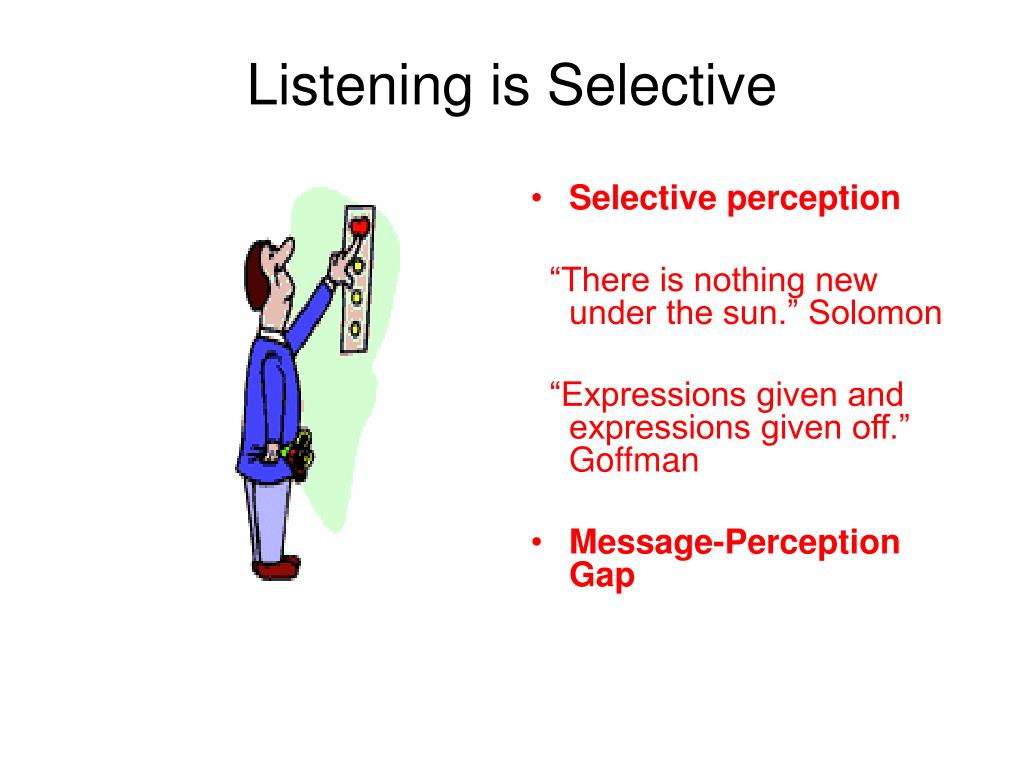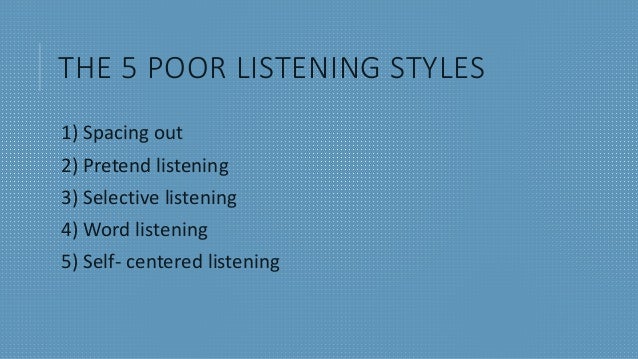

The area that surrounds the spotlight is called the fringe. But, our ability to process that image is limited to the area in the spotlight. Our attention scans an image, similar to how a spotlight shines on a specific area. This ability runs counter to the spotlight theory (Posner et al., 1980) of selective visual attention which states that we can only focus on one aspect of an image at a time. Because his cognitive capacity is so astounding, he is able to process the information from all sources, simultaneously.
Selective listening definition series#
There is a famous scene in the modern Sherlock Holmes TV series Elementary that shows Sherlock watching multiple TVs at the same time. The Spotlight Theory Of Selective Visual Attention “There is a remarkable convergence of behavioral and neurophysiological evidence suggesting that our brain is equipped with mechanisms enhancing the detection of and reaction to emotional facial information, producing involuntary effects on attention and other behavioural responses” (p. In a review of relevant neuroimaging studies, Vuilleumier (2002) suggests that the processing of emotionally balanced facial cues is not a function of selective attention, but rather occurs automatically: So, an interesting question emerges when pondering the rapid-fire processing of facial cues: are they processed automatically or a result of selective attention? That is an incredible amount of information that can all be processed from a mere glance. The human face even possesses cues regarding estrogen and testosterone levels. One can discern familiarity, age, gender, ethnic origins, attractiveness, direction of gaze, and emotional state. The human face presents a wealth of information to the viewer. The below case studies show 5 more examples.


Listening and driving: Listening to an audiobook while driving to work.
Selective listening definition full#
Phone conversations in busy places: Talking on the phone to a relative in a house full of energetic children.



 0 kommentar(er)
0 kommentar(er)
